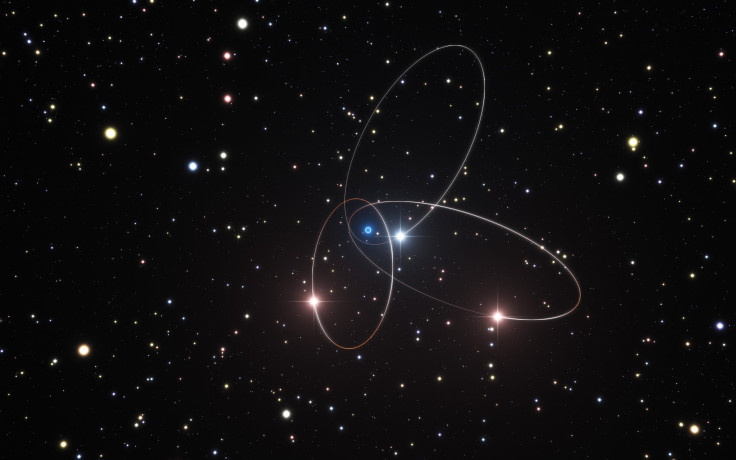Study Of Stars Orbiting Milky Way’s Supermassive Black Hole Tests Relativity, Gravitation

Using data collected over 20 years, a team of astronomers is testing how physics works in the extreme conditions that make up the surroundings of a supermassive black hole. The study of stars orbiting the supermassive black hole at the center of the Milky Way tests gravitational physics, as well as Einstein’s theory of general relativity.
German and Czech astronomers took observation data of the stars that orbit the supermassive black hole at the galactic center, 26,000 light-years away from Earth with a mass of four million suns. They compared that data — collected by European Southern Observatory’s Very Large Telescope (VLT) in Chile and other telescopes — with predictions made by both classical Newtonian gravity, as well as by general relativity.

TRENDING: Naked Models Pose As Flight Attendants In Advert For Travel Website
A research paper by the researchers has been accepted for publication in the Astrophysical Journal. In it, the authors said they found hints that a small change in the motion of one of the stars, called S2, was a deviation from the predictions of Newtonian gravity, and was instead in line with “the subtle effects predicted by Einstein’s general theory of relativity.” The change is only of a few percent in the orbit’s shape and just one-sixth of a degree in the orbit’s orientation, but they are there nonetheless.
Marzieh Parsa, a Ph.D. student at the University of Cologne, Germany, who was the lead author of the paper, said in a statement Wednesday: “The galactic center really is the best laboratory to study the motion of stars in a relativistic environment. I was amazed how well we could apply the methods we developed with simulated stars to the high-precision data for the innermost high-velocity stars close to the supermassive black hole.”
However, measurement of the very small degree of changes required very precise measurements, and the near-infrared observations made using the VLT made those possible. The telescope, located in the Atacama desert in Chile, was especially important in tracing accurately the shape of S2’s orbit, with its observations of the star both when it was close to the black hole and when it was further away.
Andreas Eckart, team leader at the University of Cologne, said in the statement: “During the course of our analysis we realized that to determine relativistic effects for S2 one definitely needs to know the full orbit to very high precision.”
S2 and a few other stars orbit our galaxy’s central supermassive black hole at very high speeds in the extremely strong gravitational field of the black hole. In 2018, S2 will make a very close approach to the black hole, and a new instrument is being prepared to measure the star’s orbit at that time. Called GRAVITY, the instrument is an interferometer and installed on the VLT, it is designed to study the region around the supermassive black hole at the center of the Milky Way.
SEE ALSO: Video Shows British Jogger Pushing Woman In Front Of Oncoming Bus
Vladimir Karas from the Academy of Sciences in Prague, who was a co-author of the study, said in the statement: “This opens up an avenue for more theory and experiments in this sector of science.”
The star S2 is about 15 times the sun’s mass, and its elliptical orbit around the black hole has a period of about 15.6 years. During its orbit, it comes as close as 17 light-hours to the black hole, which is about 120 times the distance between the sun and Earth.
© Copyright IBTimes 2025. All rights reserved.



















